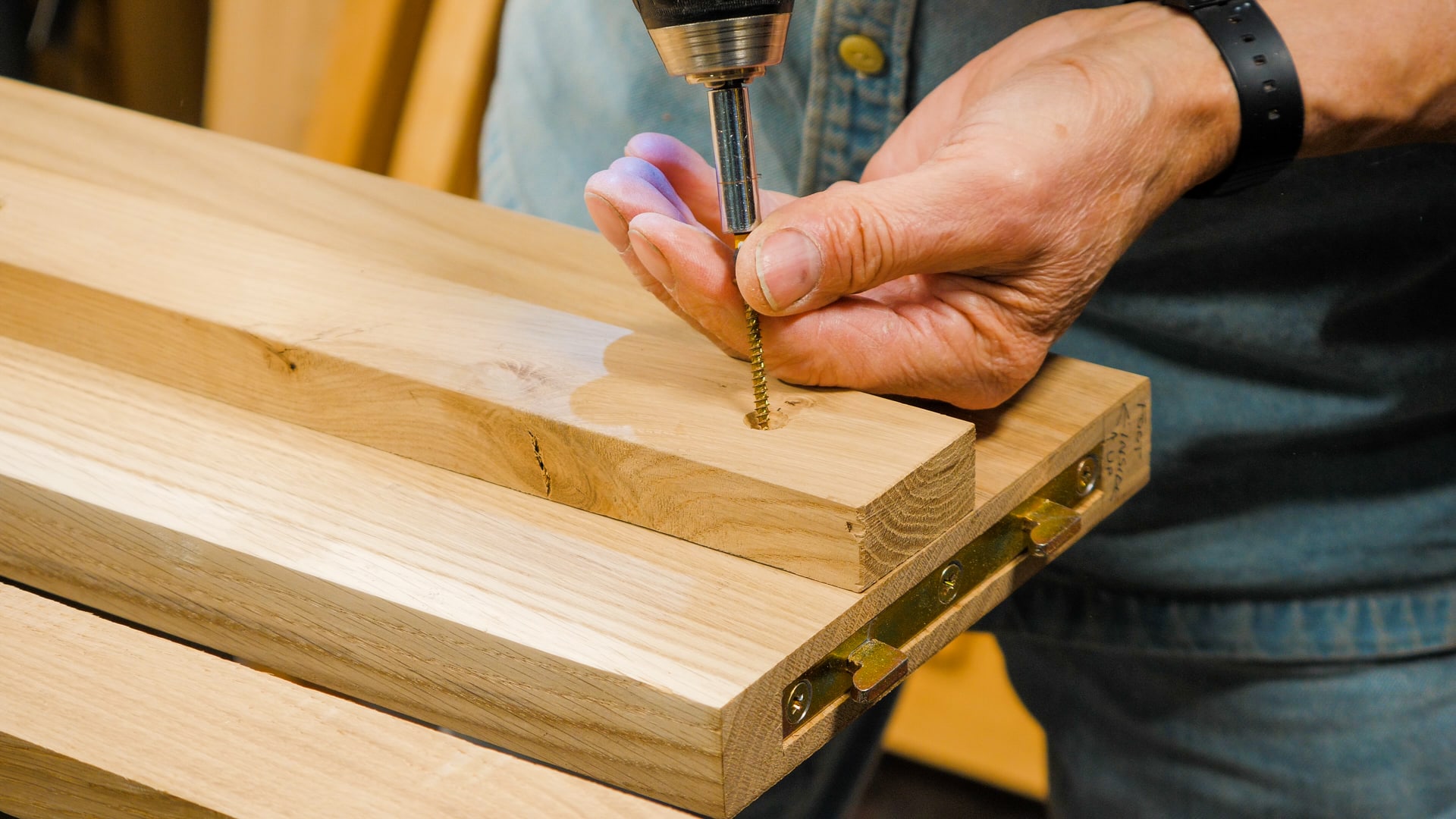Sellers home Bed: Episode 9
Posted 1 March 2023
This is an episode in a paid series. Want to watch it? You just need to sign up as a paid member, and you can enjoy this video and many other videos we think you will love.
It’s always hard to visualise a dozen boards of wood and then see it come out as a bed when you begin, but this episode bridges the gap. We take you through the final phase of bed construction with several tricks and trade secrets that ensure speed and accuracy as you close out the final phase of making and delivering your bed into your home. Enjoy!


Trying to understand why Paul went to great lengths to mark out where the mattress slats were going and then seemed to ignore them and use one of the slats to space them out when screwing them in place? Unless it was to be reassured that the slats weren’t going out of square?
Paul said: “There’s nothing wrong with having a cross reference when you are working a bit like the two column system in ancient bookkeeping.”
So my interest in this bed design was to see how the mattress and box spring was supported.
I have a king sized bed which uses a box spring about 12” thick and then a mattress which is about the same thickness.
It has a center support under the bed which is fine until you want to move the bed for some reason. When I had my carpet tightened to get the wrinkles out the workman didn’t wait for me to help and just picked up the foot of the bed and tore out all the middle supports. While it was no big deal to make new supports I was looking for an elegant solution for a mattress support system.
I can barely move my mattress by myself it’s that heavy and awkward. I was thinking of a torsion support similar to what you see on flatbed trailers, sort of like having the crown of a board up to absorb the weight. It would just straighten under load just like what you should do to support the load on a house roof. I did see part of the solution and that was to add to the number of slats, I think I have only three or four.
My father in law bought my younger son (18yrs old) a 30cm high queen size mattress for christmas a year ago, so I had to make a frame for it. I made the head and foot board really simply, and attached the side rails with draw bore M&T with no glue, so that it can be taken apart should he ever be able to afford a house with a room large enough for the bed 🙂
I used a lot of cross pieces, mainly just because I had a lot of suitable bits lying around. The thick mattress helps to spread the load, and after a year there have been no loud screams and thuds, and there’s still no play in the joinery.
Had some fun clamping the head and foot boards up, ended up putting blocks at either end of the bench and then using clamps as spreaders at either end, between the blocks and the bed legs.
I can assure you that the bed gives a very good night’s sleep!
Paul: “I think mine is a lot more solid and with a good mattress you don’t need any springiness.”
Paul: The furniture we are making are subject to own personal modifications. I have thought a lot about bed height. As you get older you might want a higher bed. There are many other reasons why you might want to change bed height. You may also change the height dependent on the thickness of the mattress. A mattress should be replaced every 6-8 years but your bed frame will be passed down through the generations.
Katrina, would you ask Paul a question please? In other projects, like making a simple box, Paul taught us that cross-grain glue-ups are okay up to about 4 to 6 inches. After that, you should account for movement. In the box, for example, it was okay to glue the sides directly to the bottom, despite being cross grained, since the bottom was only about 5″ wide. In this bed, the rails are 8″ wide, but the double tenons are both glued. This seems to break the guidance of not going wider than 4-6″ before allowing for movement. Why is it okay here? Is it because the rails are so thick? I recently made a door with an arched top rail that was about 7″ wide. I made sure to let the 2nd tenon float, but in my case the material was only 3/4″ thick, not 1 1/4 (or whatever Paul’s rails were). Anyway, my question for Paul is, why was making the tenons dead tight (across the rail) and gluing them (no float) okay here?
That’s a really interesting question Ed
Katrina, any chance for an answer to this question from March 31 about the width of the tenons?